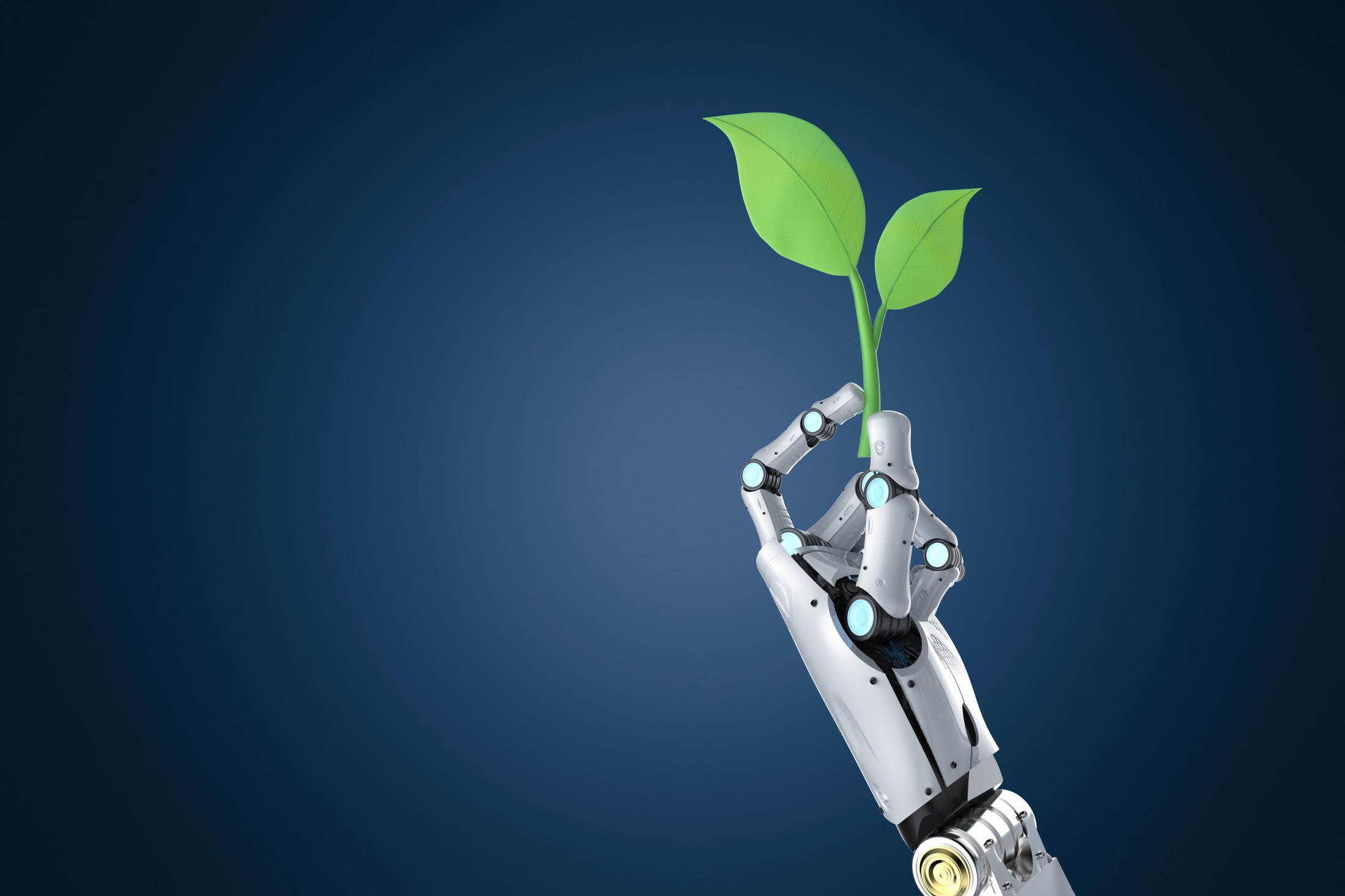AI and Sustainability: Building a Future That’s Smarter and Greener

Artificial intelligence (AI) and sustainability are reshaping the corporate landscape, each unlocking potential to transform industries. As AI's capabilities accelerate and its applications proliferate, the demand for energy and resources rises in parallel. This tension between technological advancement and environmental impact necessitates an "eco-AI" approach—a fusion of AI's transformative power with sustainable practices. By integrating AI into sustainability strategies, businesses can achieve unparalleled innovation, efficiency, and resilience while minimizing their carbon footprint.
Forward-thinking companies are leveraging AI to address sustainability challenges while delivering business value. Here are four impactful ways AI is driving sustainable innovation:
1. Enhancing Customer Value with Sustainable Choices
Consumers increasingly value sustainability but often lack clarity about what constitutes a sustainable product or service. AI bridges this gap by tailoring communications and experiences to individual preferences.
Case Study: Ikea’s AI-driven recommendation engine suggests products based on customers’ sustainability preferences, driving engagement and conversions. Approximately 20% of interactions with the tool lead to site visits, and 5% result in purchases.
2. Improving Financial and Environmental Performance
AI enables companies to create sustainable offerings that optimize costs and generate new revenue streams.
Example: A food company could use AI to track and reward farmers for reducing emissions, creating a premium low-carbon product line. This strategy builds a flywheel effect: sustainability improves supply chain resilience, and profits from premium products fund further innovations.
3. Reducing Risk and Enhancing Resilience
AI's predictive capabilities empower businesses to assess risks from climate-related events and design robust mitigation strategies.
Example: Mining and agricultural companies use AI to analyze facility exposure to risks like floods, heat, and wildfires, enabling them to safeguard operations and develop transition plans for high-risk locations.
4. Operational and Supply Chain Digital Twins
Digital twins powered by AI provide a real-time, interactive model of operations and supply chains, enabling informed decision-making.
Public Sector Innovation: Singapore’s Virtual Singapore platform uses AI to simulate urban planning scenarios, optimize energy use, and reduce emissions in transportation systems.
To integrate AI into sustainability strategies effectively, Chief Sustainability Officers (CSOs) and Chief Technology Officers (CTOs) must collaborate. These three principles guide successful eco-AI integration:
1. Treat IT’s Carbon Footprint as a Priority
Historically, IT's emissions were negligible compared to other sources, such as packaging or raw materials. However, AI’s rapid growth is changing this dynamic.
Rising Energy Demand: By 2030, IT emissions, driven by AI and data-intensive applications, are expected to triple in industries like consumer goods.
Holistic Emissions Mapping: Companies must assess emissions across all AI-related activities, including Scope 3 emissions from third-party suppliers and customer use of AI-enabled tools.
2. Win the Green Energy Race
Decarbonizing IT begins with partnering with sustainably powered cloud providers.
Proactive Engagement: Assess the power usage efficiency of data centers and prioritize suppliers investing in renewable energy. Emerging dashboards and tracking tools can monitor energy consumption and guide sustainable decision-making.
Prepare for Energy Constraints: With electricity demand projected to surpass supply, businesses must secure their place in the queue for green power to meet net-zero goals.
3. Optimize AI Use for Sustainability
Organizations must ensure that AI is deployed efficiently to balance innovation with environmental responsibility.
Upskilling for Eco-Design: Train teams in eco-design principles, such as selecting appropriately sized AI models to minimize energy consumption.
Efficiency Gains Through Fine-Tuning: Techniques like model fine-tuning and quantization can reduce AI emissions by up to 70%, ensuring optimal performance with reduced energy use.
Prompt Engineering: Predefined prompts and semantic caching can lower energy consumption by decreasing redundant processing tasks.
Integrating AI and sustainability is not only a challenge but also an unprecedented opportunity. Businesses that strategically combine these priorities can:
Lead the Market: Offer innovative, sustainable products and services that resonate with environmentally conscious consumers.
Build Resilience: Use AI to anticipate risks, optimize operations, and strengthen supply chains.
Achieve Net-Zero Goals: Embed sustainable practices into AI development and usage from the outset.
The intersection of AI and sustainability offers businesses a pathway to innovation that benefits both the planet and the bottom line. By adopting an eco-AI approach—balancing rapid technological advances with sustainable practices—companies can lead the transition to a greener, tech-driven future. The key lies in innovating boldly, acting responsibly, and embedding sustainability into every aspect of AI’s lifecycle.
The time to act is now. As AI adoption grows and energy demands surge, the companies that embrace eco-AI will define the next era of sustainable innovation.

For modern telecom enterprises, delivering exceptional QoS is no longer optional—it’s a brand differentiator and a strategic lever for growth. Static provisioning models won’t cut it in a world of hyper-dynamic data usage.